- | 8:00 am
Bang & Olufsen designed its new speaker for a long life, and inventible death
In a category defined by waste, the Beosound A5 portable speaker is a sleek and sustainable alternative.
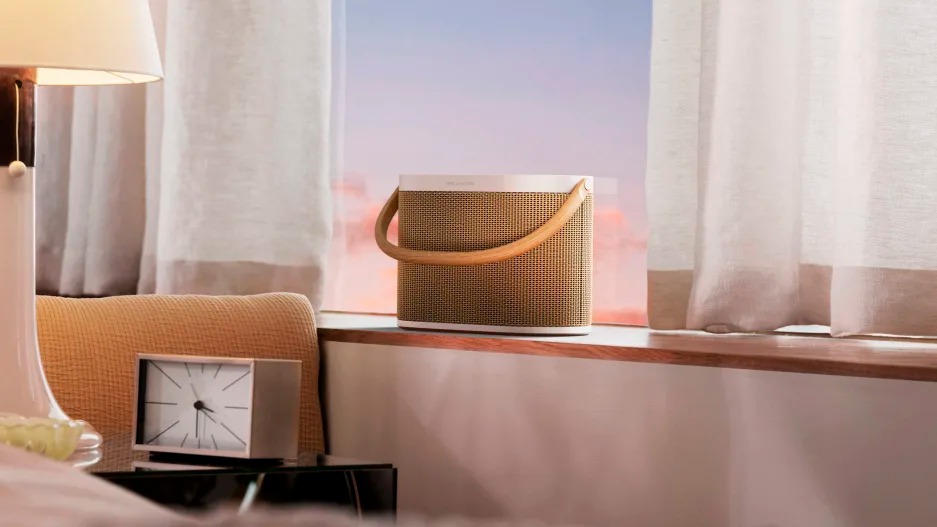
A tool. A clock. A piece of furniture. We all have utilitarian items that have been handed down to us by our parents or grandparents—though in today’s era of disposability, it often feels like the sum total of our posterity will be a pile of dead iPhones.
For Stine Gam, half of furniture and homeware design duo GamFratesi, one of her prized heirlooms hailed from high-end Danish electronics purveyor Bang & Olufsen. “I vividly remember my grandmother having a Bang & Olufsen turntable as a child, which has been passed on to me and now plays in our home,” she says.
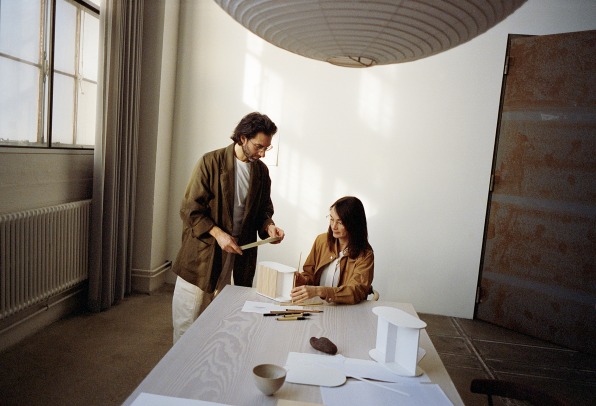
So when the brand approached GamFratesi around three years ago to collaborate on a portable speaker designed with longevity in mind, the studio took on the project—and the result is the Beosound A5, which launches today in two colorways.
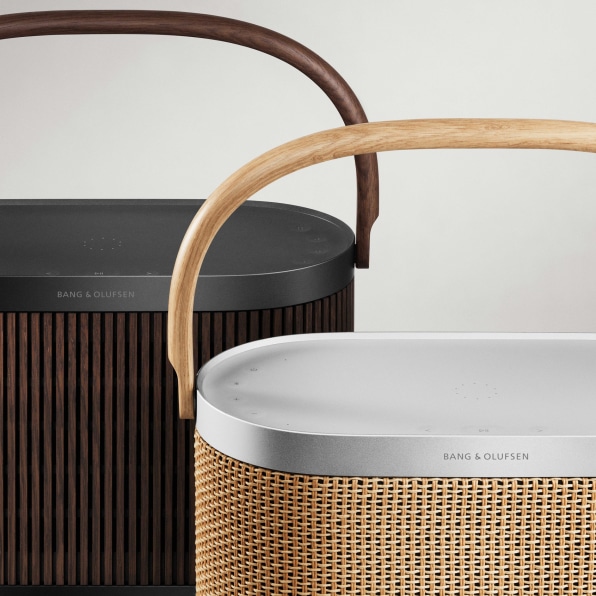
A modular design was key in the fight against obsolescence. In 2020, B&O launched a project to resurrect its 1970s-era Beogram 4000c turntables, which were originally built with additional space inside to accommodate future tech upgrades. Rather than produce new units for the limited-edition rerelease, B&O collected 95 originals and cleaned, inspected, and refinished them, adding modern components to boot.
Mads Kogsgaard Hansen, the brand’s senior global product manager, says the company carried the same concept over to the Beosound Level, and now the 280-watt Beosound A5. “We believe that products should not just be for temporary trends but treated as personal objects to be experienced and carried on into the future,” he says.
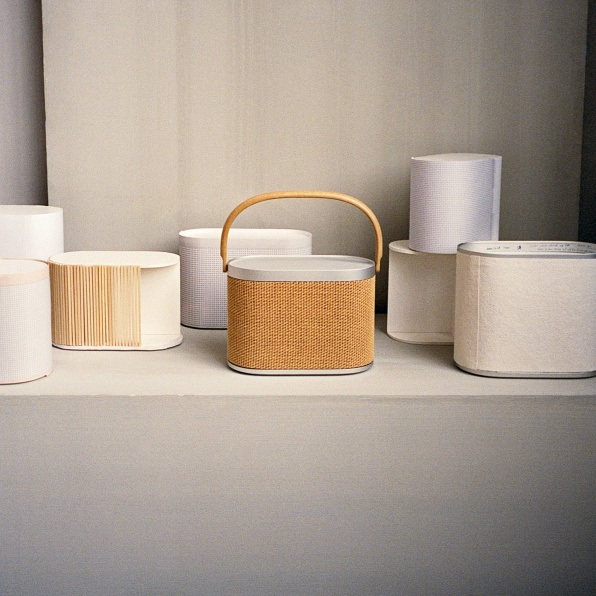
The Beosound A5 features additional space in the interior of the speaker that makes it easier for technicians to update and repair, but the design takes a small step toward enabling self-repair, too. People can replace the Beosound A5’s 12-hour battery by simply screwing off the bottom of the device.
“These design elements ensure a long lifetime with one customer, and potentially multiple loops with a series of different ownerships in the future,” Hansen says.
Of course, such design features come at a cost—$1,049 for the Nordic Weave model, and $1,149 for the Dark Oak version. That’s where aesthetics become essential, and where B&O becomes critical.
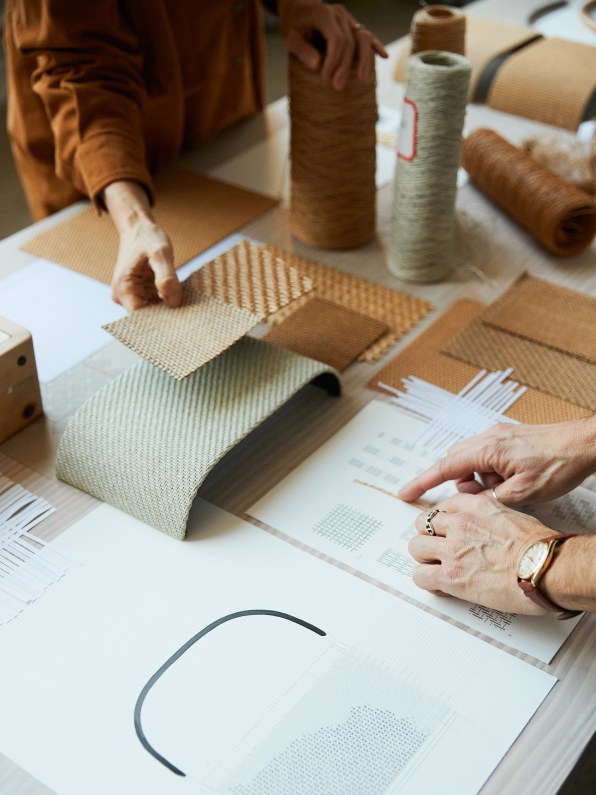
The design duo is known for its thoughtful infusion of material and heritage (Gam hailing from Denmark, and Enrico Fratesi from Italy), and here they sought natural solutions from the Scandinavian tradition. From an industrial design standpoint, they say creating the speakers was a complex process that ultimately utilized bent wood, raffia, and wood veneer.
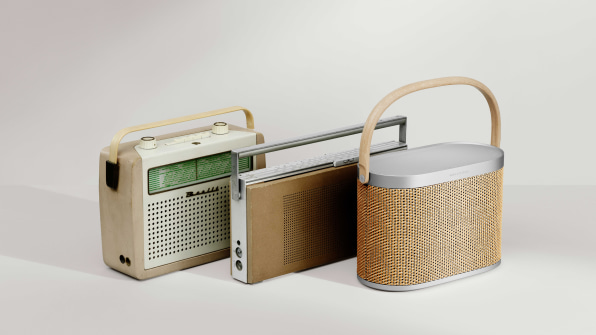
Drawing inspiration from Scandinavian beaches, the Nordic Weave model incorporates B&O’s signature natural aluminum with a woven paper fiber front and light oak handle. The Dark Oak version utilizes black anthracite aluminum and oak, which the duo notes is evocative of the region’s winter woodlands. The material choices and geometry of the designs also reference the early B&O portable speaker models, such as the Beolit 800 and Beolit 1000, both designed by Jacob Jensen.

Going forward, the brand plans to take full advantage of the modular design and release customizable covers and handles in new materials and colors so that the speaker can change and evolve with its users and the aesthetic trends of the day.
Here, B&O also does what most brands will not: It acknowledges that no matter how much longevity is built into a given product, it will eventually come to the end of its life cycle. To that end, the team has made the speaker easy to disassemble, and to separate obsolete recyclable components and those that can be repurposed for circular solutions.
Ultimately, as Hansen says, “Longevity and timelessness are ambitions that are designed for—but we recognize that only time will tell if this has truly been achieved.”





































